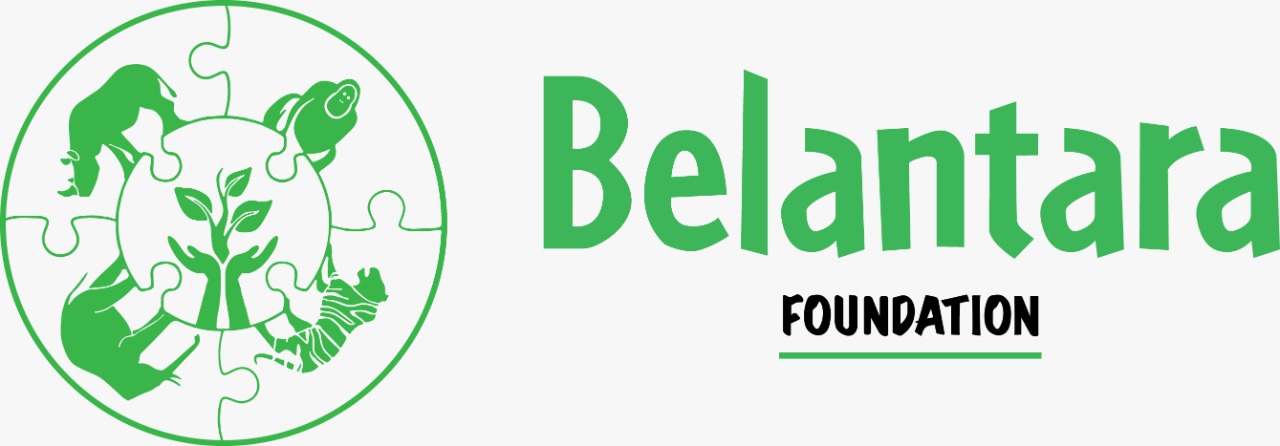Climate change and its implications on wildlife conservation
Abstract
The Intergovernmental Panel on Climate Change (IPCC) Synthesis Report, released nearly a year ago, summarized five years of reports on global temperature rises, fossil fuel emissions and climate impacts and emphasised that there was “a rapidly closing window of opportunity to secure a liveable and sustainable future for all.” It demonstrated an undeniable scientific consensus about the urgency of the climate crisis, its primary causes, its current devastating impacts – especially on the most climate vulnerable regions – and the irreversible harm that will occur to both the natural world and human society if warming surpasses 1.5°C, even temporarily.
For Indonesia, climate change poses a formidable challenge for its people and its rich terrestrial and marine biodiversity that encompasses such a diverse array of ecosystems ranging from lush rainforests and dry savannas to extensive swamps and coral reefs. As the world's fourth most populous nation and the biggest archipelagic country in the world, Indonesia consists of some 17,000 islands, with over 8,000 km of coastline and is therefore extremely vulnerable to the impacts of global climate change. The nation's rich biodiversity, encompassing iconic species such as the Sumatran tiger, orangutan, and Komodo dragon, is intricately linked to the health of its ecosystems. Rising temperatures, changing precipitation patterns, and the increasing frequency of extreme weather events disrupt these ecosystems, leading to shifts in species composition and distribution.
Keywords
References
Abrahms, B., Carter, N. H., Clark-Wolf, T. J., Gaynor, K. M., Johansson, E., Mcinturff, A., Nisi, A. C., Rafiq, K., and West, L. (2023). Climate change as a global amplifier of human–wildlife conflict. Nature Climate Change, 13(3), 345-353. https://doi.org/10.1038/s41558-023-01608-5
Acevedo-Whitehouse, K., and Duffus, A. L. J. (2009). Effects of environmental change on wildlife health. Phil. Trans. R. Soc. B, 364, 3429–3438. https://doi.org/10.1098/rstb.2009.0128
Adhiasto, D. N., Johnsen, P., Mardiah, S., Exploitasia, I., Giyanto., Fahlapie, P., Andriansyah, M. I., Hafizoh, N., Setyorini, Y. D., Mardhiah, U., and Linkie, M. (2022).A criminal justice response to address the illegal trade of wildlife in Indonesia. Conservation
Letters, 16, e12937. https://doi.org/10.1111/conl.12937
Adnan, B. A., and Dadi. (2023). Tropical forest conservation efforts as climate change mitigation in Indonesia: A Review. Interdisciplinary International Journal of Conservation and Culture, 1(2), 80-89. https://doi.org/10.25157/iijcc.v1i2.3633
Alisjahbana, A. S., and Busch, J. M. (2017). Forestry, Forest Fires, and Climate Change in Indonesia. Bulletin of Indonesian Economic Studies, 53(2), 111-136. https://doi.org/10.1080/00074918.2017.1365404
Hannah, L., Midgley, G. F., Andelman, S., Araujo, M. B., Hughes, G. O., Martinez-Meyer, E., Pearson, R., and Williams, P. H. (2007). Protected area design in a changing climate. Frontiers in Ecology and the Environment, 5(9), 431-438. https://doi.org/10.1890/1540-9295(2007)5[131:PANIAC]2.0.CO;2
IPCC. (2023). Climate Change 2023: Synthesis Report. Contribution of Working Groups I, II and III to the Sixth Assessment Report of the Intergovernmental Panel on Climate Change. H. Lee and J. Romero (eds.). IPCC: Geneva, Switzerland. https://doi.org/10.59327/IPCC/AR6-9789291691647.
Johnson, J. E., Welch, D. J., van Hooidonk, R., Tracey, D., Chandrasa, G., Molinari, B., Triani, D., Tania, C., and Susanto, H. (2023). Climate change implications for the Arafura and Timor Seas region: assessing vulnerability of marine systems to inform management and conservation. Climatic Change, 176(88), 1-26. https://doi.org/10.1007/s10584-023-03554-9
Lestari, N. S., and Priatna, D. (2020). Prinsip-Prinsip Restorasi Ekosistem Hutan Dataran Rendah Lahan Kering. In: Y. Rochmayanto, D. Priatna, & M. Z. Mutaqqin (eds.). Strategi dan Teknik Restorasi Ekosistem Hutan Dataran Rendah Lahan Kering. Bogor: IPB Press. Pp. 32-48.
Miller-Rushing, A. J., Primack, R. B., and Şekercioğlu, C. H. (2019). Conservation Consequences of Climate Change for Birds. In: P.O. Dunn & A.P. Moller (eds.). Effects of Climate Change on Birds. 2nd Edition. Oxford: Oxford University Press. Pp. 295-309.
Monk, K. A., and Priatna, D. (2022). Environmental security and resilience – Indonesia an dglobal challenges. Indonesian Journal of Applied Environmental Studies, 3(1): 3-15. https://doi.org/10.33751/injast.v3i1.5215
Parmesan, C., & Yohe, G. (2003). A globally coherent fingerprint of climate change impacts across natural systems. Nature, 421(6918), 37-42. https://doi.org/10.1038/nature01286
Pertiwi, N., Tsusaka, T. W., Sasaki, N., and Gunawan, E. (2021). Peatland conservation strategies and carbon pricing possibilities for climate change mitigation in Indonesia: a review. IOP Conf. Ser.: Earth Environ. Sci. 892 012061. https://doi.org/10.1088/1755-1315/892/1/012061
Priatna, D., Suryadi, D., Rochmayanto, Y., and Afandi, I. (2021). Restorasi Ekosistem Hutan Mangrove pada Hutan Lindung sebagai Penyangga Konsesi HTI. In: D. Priatna, Y. Rochmayanto, K. L. Ginoga & M. Z. Mutaqqin (eds.). Strategi dan Teknik Restorasi Ekosistem Hutan Mangrove. Bogor: IPB Press. Pp. 49-57.
Priatna, D., Syaepulloh, I. L., and Ario, A. (2022). Perception and awareness of local Community to a “Green Wall” forest restoration programme in the Gunung Gede Pangrango National Park, Indonesia. Asian Journal of Conservation Biology, 11(1): 77-83. https://doi.org/10.53562/ajcb.71349
Pusparini, W., Cahyana, A., Grantham, H. S., Maxwell, S., Soto‑Navarro, C., and Macdonald, D. W. (2023). A bolder conservation future for Indonesia by prioritising biodiversity, carbon and unique ecosystems in Sulawesi. Scientific Reports, 13, 842. https://doi.org/10.1038/s41598-022-21536-2
Rahman, W., Brehm, J. M., and Maxted, N. (2023). The impact of climate change on the future distribution of priority crop wild relatives in Indonesia and implications for conservation planning. Journal for Nature Conservation, 73, 126368. https://doi.org/10.1016/j.jnc.2023.126368
Sala, O.E., Chapin F. S., Armesto, J. J., Berlow, E. L., Bloomfield, J. B., Dirzo, R. H., Huber-Sannwald, E., Huenneke, L., Jackson, R. B., Kinzig, A. P., Leemans, R., Lodge, D. M., Oesterheld, M. I. N., Poff, N. L., Sykes, M. T., Walker, B., Walker, M., and Wall, D. H. (2000). "Global biodiversity scenarios for the year 2100." Science, 287(5453), 1770-1774. https://doi.org/10.1126/science.287.5459.1770
Sushadi, P. S. (2023). The distribution and current state of biobanking in Indonesian wildlife: a systematic review. Animal Conservation, 26(6), 2023. https://doi.org/10.1111/acv.12879
Wilkening, J. L., Magness, D. R., Harrington, A., Johnson, K., Covington, S., and Hoffman, J. R. (2022). Incorporating Climate Uncertainty into Conservation Planning for Wildlife Managers. Earth, 3(1), 93-114. https://doi.org/10.3390/earth3010007
DOI: 10.33751/injast.v4i2.9661
 Abstract views : 504
Abstract views : 504
Refbacks
- There are currently no refbacks.
Copyright (c) 2024 Indonesian Journal of Applied Environmental Studies

This work is licensed under a Creative Commons Attribution-NonCommercial-ShareAlike 4.0 International License.













